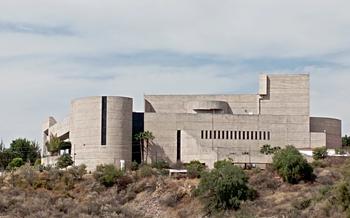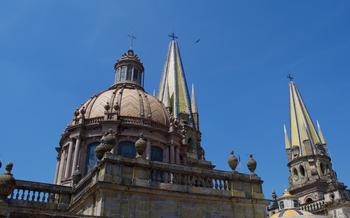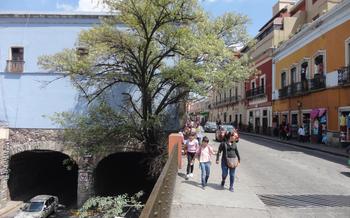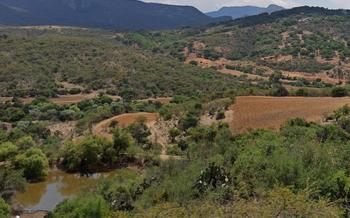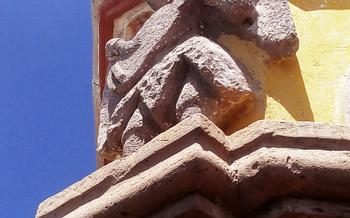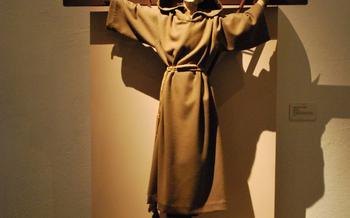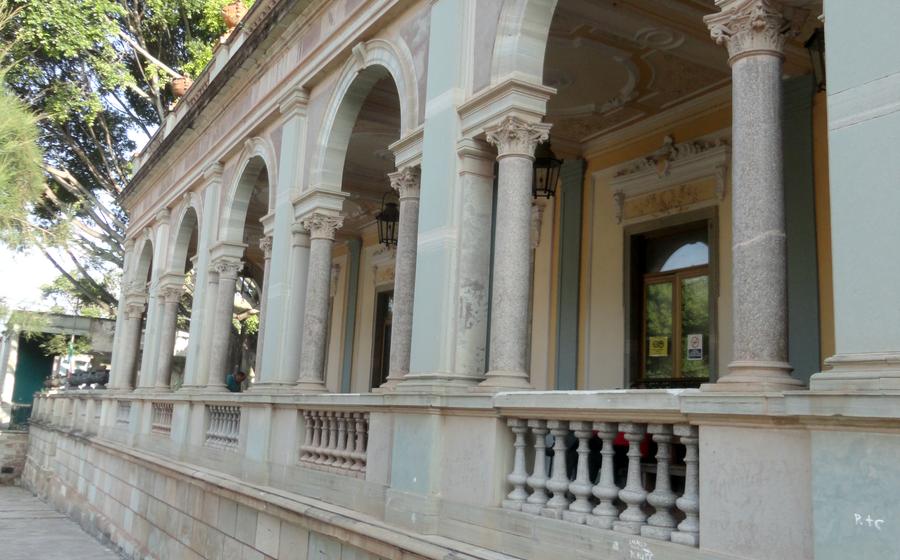
Templo de Belén (Bethlehem Church)
- The Templo de Belén (Bethlehem Church): A Baroque Masterpiece
- Location and Accessibility
- Hours of Operation and Admission Fees:
- Architectural Features and Design
- Interior Decorations and Artwork
- Religious Importance and Cultural Significance
- Guided Tours and Special Events
- Photography and Videography
- Nearby Attractions and Activities
- Accessibility for Visitors with Disabilities
- Dress Code and Etiquette
- Local Customs and Traditions
- Insider Tip: The Hidden Crypt
The Templo de Belén (Bethlehem Church): A Baroque Masterpiece
The Templo de Belén, a stunning Baroque masterpiece, stands as a testament to Guanajuato's rich religious and cultural heritage. Constructed in the 18th century, the church played a pivotal role in the city's mining boom, attracting wealthy patrons who lavished it with opulent decorations and artwork.
The Templo de Belén's architectural grandeur is evident from its imposing facade, adorned with intricate carvings and sculptures. Its pink sandstone exterior, a striking contrast to the city's colorful buildings, adds to its allure. The church's twin bell towers and majestic domes soar into the sky, creating a dramatic silhouette against the backdrop of the surrounding hills.
Location and Accessibility
The Templo de Belén is conveniently located in the heart of Guanajuato, a city known for its vibrant colors and rich cultural heritage. Situated on Calle Juárez, between Plaza de la Paz and Plaza del Baratillo, the church is easily accessible by foot from most of the city's attractions. Visitors can embark on a leisurely stroll through the narrow cobblestone streets, taking in the colonial architecture and lively atmosphere of Guanajuato, before arriving at the magnificent Templo de Belén.
For those who prefer public transportation, there are several bus stops within walking distance of the church. The city's public transportation system provides convenient and affordable options to reach the Templo de Belén from different parts of Guanajuato. Alternatively, visitors can opt for a guided tour, which often includes transportation to and from the church, as well as insightful commentary on its history and significance.
Hours of Operation and Admission Fees:
The Templo de Belén is open to visitors from Tuesday to Sunday, with varying hours of operation. During the week, the church is open from 10:00 AM to 6:00 PM, while on Sundays, it is open from 12:00 PM to 6:00 PM. Please note that these hours may change during holidays or special events, so it is advisable to check the church's website or contact the local tourism office for the most up-to-date information.
Admission to the Templo de Belén is free of charge, allowing visitors to explore its stunning interior and admire its architectural and artistic treasures without any financial burden. This free admission policy makes the church accessible to people from all backgrounds, fostering a sense of inclusivity and encouraging cultural appreciation.
Architectural Features and Design
The Templo de Belén showcases a stunning Baroque architectural style, characterized by its grandeur, intricate details, and exuberant ornamentation. The church's facade is a masterpiece of pink sandstone, elegantly adorned with elaborate carvings and sculptures. The main entrance features a grand arched gateway, flanked by towering columns and crowned by a decorative pediment. The two bell towers, rising majestically on either side of the facade, add to the church's imposing presence. The domes, perched atop the towers, are adorned with intricate patterns and finials, reflecting the Baroque style's emphasis on verticality and movement. The overall design of the Templo de Belén exemplifies the fusion of European architectural traditions with local craftsmanship, creating a unique and awe-inspiring edifice that has become an iconic landmark of Guanajuato.
Interior Decorations and Artwork
The interior of the Templo de Belén is a testament to the opulence and craftsmanship of the Baroque era. The main altar, a dazzling masterpiece of intricate carvings, is adorned with statues of saints, angels, and cherubs. The walls are adorned with murals and paintings depicting scenes from the Bible, creating a visual feast that captivates the eyes.
The church's stained glass windows are a symphony of vibrant colors, casting a warm glow on the interior. Each window tells a story from the life of Christ or the saints, adding to the sacred atmosphere of the church. Visitors can spend hours admiring the intricate details and symbolism hidden within these beautiful works of art.
The combination of elaborate carvings, vibrant paintings, and colorful stained glass windows creates a breathtaking spectacle that transports visitors back in time to the grandeur of the Baroque era. Every corner of the Templo de Belén is adorned with artistic treasures, making it a feast for the eyes and a testament to the enduring power of faith and devotion.
Religious Importance and Cultural Significance
The Templo de Belén holds a profound religious significance for the people of Guanajuato. It serves as a symbol of faith and devotion, attracting worshippers from all over the city and beyond. The church is particularly revered during the Christmas season, when it becomes the focal point of elaborate celebrations and festivities.
Beyond its religious importance, the Templo de Belén has become an integral part of Guanajuato's cultural heritage. Its unique architectural style and rich artistic decorations have made it a symbol of the city's rich history and artistic traditions. The church is often featured in local festivals, cultural events, and artistic representations, showcasing its enduring cultural significance.
Guided Tours and Special Events
Guided tours are available for visitors who want to delve deeper into the history, architecture, and artwork of the Templo de Belén. English-speaking tours are offered to accommodate international visitors. These tours provide insights into the church's construction, its role in the city's mining history, and the symbolism behind its intricate decorations. Visitors can learn about the significance of the various saints depicted in the altarpieces and murals, and gain a deeper appreciation for the church's cultural importance.
Special events and concerts are occasionally held within the church, creating a unique opportunity to experience the sacred space in a different light. These events may include classical music concerts, choral performances, or religious festivals. Attending a special event at the Templo de Belén is a memorable way to immerse oneself in the city's cultural heritage and witness the church's vibrant atmosphere.
Photography and Videography
Visitors are welcome to capture the beauty of the Templo de Belén through photography and videography. However, it is important to be respectful of the sacred nature of the church and follow the guidelines set by the administration. Photography and videography are generally permitted in the church's public areas, but there may be restrictions in certain areas, such as the altar or during religious services.
To capture the best shots, it is advisable to visit the church during the daytime when natural light illuminates the interior. Experiment with different angles and perspectives to showcase the church's architectural features and intricate details. Using a tripod can help stabilize your camera and achieve sharp images.
While capturing the church's beauty, it is essential to be mindful of the ongoing religious activities and maintain silence during services. Flash photography and intrusive lighting equipment should be avoided to prevent disturbing worshippers. By following these guidelines, visitors can respectfully document their visit and share the splendor of the Templo de Belén with others.
Nearby Attractions and Activities
In the vicinity of the Templo de Belén, visitors can embark on a journey through Guanajuato's rich cultural heritage. A short stroll takes you to the Museo Casa Diego Rivera, the birthplace of the renowned Mexican muralist Diego Rivera. Here, you can immerse yourself in his artistic genius and learn about his early life and inspirations.
For a deeper dive into the city's history, the Museo de las Momias (Mummy Museum) is a unique and macabre attraction. This museum showcases a collection of naturally mummified bodies, providing a glimpse into Guanajuato's past and the fascinating phenomenon of natural mummification.
To experience the city's vibrant artistic scene, head to the Teatro Juárez, a majestic theater known for its stunning architecture and acoustics. Catch a live performance, marvel at the opulent interior, and soak in the city's cultural pulse.
Guanajuato is also a culinary paradise, offering a diverse range of dining options. From traditional Mexican cuisine to international flavors, there's something to satisfy every palate. Take advantage of the many restaurants, cafes, and bars located within walking distance of the Templo de Belén, and savor the local flavors that Guanajuato has to offer.
Accessibility for Visitors with Disabilities
The Templo de Belén has taken commendable steps to ensure accessibility for visitors with disabilities. Wheelchair-accessible ramps are strategically placed throughout the church, allowing individuals with limited mobility to navigate the premises with ease. Designated seating areas within the church provide a comfortable and inclusive environment for those who require additional support. Additionally, the church staff and volunteers are always ready to assist visitors with any special needs, ensuring a welcoming and accessible experience for all.
Dress Code and Etiquette
When visiting the Templo de Belén, it is important to be mindful of the sacred nature of the site. Dress modestly and respectfully, avoiding shorts, tank tops, and other revealing clothing. During religious services, remain silent and refrain from taking photos or videos. Show respect for the local customs and traditions by behaving politely and avoiding disruptive behavior.
Local Customs and Traditions
When visiting the Templo de Belén, it's essential to be mindful of the local customs and traditions associated with the site. As a sacred place of worship, the church holds deep significance for the local community, and visitors should strive to respect these traditions.
Maintaining a respectful demeanor and avoiding disruptive behavior during religious services is paramount. Visitors should refrain from talking loudly, taking photos or videos during these times, and generally behaving in a manner that might disturb the ongoing worship.
It's also important to dress appropriately when visiting the church. While there is no strict dress code, visitors should opt for modest clothing that covers their shoulders and knees. This shows respect for the religious nature of the site and aligns with local customs.
By observing these customs and traditions, visitors can demonstrate their respect for the local culture and contribute to a positive experience for all.
Insider Tip: The Hidden Crypt
Beneath the Templo de Belén lies a hidden crypt, a secret chamber that few visitors know about. To access it, you'll need to ask a member of the church staff to guide you. The crypt is home to the remains of the church's founders and other notable figures from Guanajuato's history. The dimly lit chamber is filled with ornate sarcophagi and eerie silence, creating a mystical and unforgettable experience.
